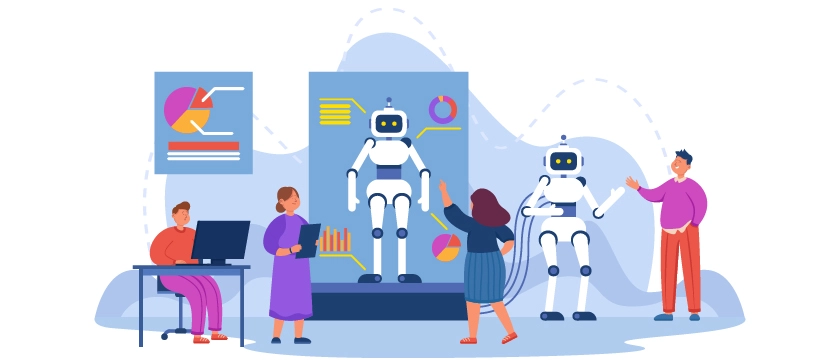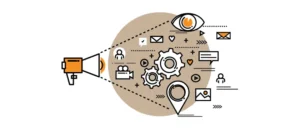Introduction
In the dynamic world of digital marketing, understanding and reaching your target audience effectively is more crucial than ever. With the advent of Artificial Intelligence (AI), audience targeting has been revolutionized, enabling marketers to deliver personalized experiences, optimize campaigns, and achieve better results. Here’s an in-depth look at how AI transforms audience targeting in 2024 and the benefits it brings to businesses.
Understanding AI in Audience Targeting
AI-powered audience targeting leverages machine learning algorithms and data analytics to identify and segment audiences accurately. It goes beyond traditional methods by analysing vast amounts of data from various sources, including social media, browsing behaviour, purchase history, and more, to uncover patterns and insights that guide marketing strategies.
Key Benefits of AI in Audience Targeting
Enhanced Precision and Accuracy
- Advanced Segmentation: AI can segment audiences based on intricate behavioral patterns, preferences, and demographics. This enables marketers to create highly specific audience groups more likely to engage with their content.
- Predictive Analytics: AI predicts future behaviors and preferences by analysing past data, allowing marketers to anticipate needs and tailor their messages accordingly.
Personalized Marketing
- Dynamic Content Delivery: AI algorithms can tailor content in real time to match individual user preferences, enhancing engagement and conversion rates.
- Personalized Recommendations: By analysing user behavior, AI can provide customized product or content recommendations, improving user experience and boosting sales.
Optimized Ad Spend
- Efficient Budget Allocation: AI identifies the most lucrative audience segments, ensuring marketing budgets are allocated to areas with the highest potential return on investment (ROI).
- Real-Time Bidding: In programmatic advertising, AI optimizes ad bids in real time, ensuring that ads are shown to the right audience at the right time and the best price.
Improved Customer Insights
- Deep Data Analysis: AI processes large datasets to uncover deeper customer behaviour and preferences insights.
- Sentiment Analysis: AI tools can analyse social media and other online content to gauge public sentiment towards brands, products, or campaigns, providing valuable feedback for marketing strategies.
Implementing AI in Audience Targeting
Data Collection and Integration
- Comprehensive Data Sources: Gather data from various sources, including CRM systems, social media, website analytics, and third-party data providers, to create a holistic view of your audience.
- Data Integration: Ensure all data is integrated and accessible for AI algorithms to analyse and derive insights.
Choosing the Right AI Tools
- AI Platforms: Invest in AI-powered marketing platforms that offer advanced audience targeting capabilities. Tools like Google Ads, Facebook Ads, and specialized AI-driven platforms can help optimize targeting strategies.
- Custom AI Solutions: For more tailored needs, consider developing custom AI solutions aligning with your business goals and audience characteristics.
Segmentation and Targeting
- behavioural Segmentation: Use AI to segment audiences based on behaviour such as browsing history, purchase patterns, and content engagement.
- Demographic and Psychographic Segmentation: AI can also segment based on demographics (age, gender, location) and psychographics (interests, lifestyle).
Continuous Learning and Optimization
- Adaptive Algorithms: Utilize AI algorithms that continuously learn and adapt from new data to refine audience segments and targeting strategies.
- A/B Testing: Conduct A/B testing to measure the effectiveness of different targeting approaches and optimize based on performance data.
Case Studies and Success Stories
E-commerce Personalization
- Example: An online retailer uses AI to analyse customer purchase history and browsing behaviour, delivering personalized product recommendations and email campaigns. This approach results in a significant increase in conversion rates and customer satisfaction.
Programmatic Advertising
- Example: A tech company employs AI-driven programmatic advertising to target potential customers more precisely. They achieve higher engagement rates and lower acquisition costs by leveraging real-time bidding and AI insights.
Content Marketing Optimization
- Example: A media company uses AI to analyse audience preferences and content performance, tailoring its content strategy to match audience interests. This leads to higher readership and engagement levels.
Conclusion
AI fundamentally transforms audience targeting, enabling marketers to reach their ideal customers with unprecedented precision and personalization. By leveraging AI’s capabilities, businesses can optimize their marketing efforts, improve customer engagement, and achieve better ROI. As AI technology continues to evolve, its role in audience targeting will only become more integral, making it essential for businesses to embrace and integrate AI-driven strategies into their marketing arsenal. Staying ahead of the curve in AI adoption can provide a significant competitive advantage in the ever-evolving digital marketing landscape of 2024.
To learn more or to acquire our services, please contact us at info@paypercampaign.com





